|
Acanthostachys strobilacea
Native to Brazil. |
|
|
Aechmea
About 204 species, native to southern
Mexico, Central America, South America and the West
Indies, with 42 species cultivated in southern Africa. |
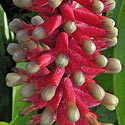 |
|
Ananas
comosus (Pineapple)
Native to Brazil and is cultivated
as a fruit in southern
Africa (e.g. in the Eastern Cape). |
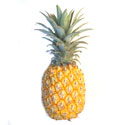 |
|
Araeococcus
Two species cultivated: Araeococcus
flagellifolius (native from Colombia to Brazil) and
Araeococcus pectinatus (native from Costa Rica to
Colombia). |
|
|
Billbergia
About 60 species, native to Mexico,
Central America and South America. Ten species are
cultivated in southern Africa. |
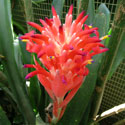 |
|
Brocchinia reducta
Native to Venezuela and Guyana. |
|
|
Bromelia
Two species cultivated: Bromelia
balansae (Macambira) (native from Colombia to
Argentina) and Bromelia pinguin (Pi˝uela,
Pinguin) (native from Mexico to Ecuador). |
|
|
Canistropsis
Eleven species, native mainly to Brazil.
Five species are
cultivated in southern Africa. |
|
|
Catopsis
Over 20 species, native from Florida
to Brazil, as well as the Caribbean. Five species are
cultivated in southern Africa. |
|
|
Cryptanthus
About 20 species, native to Brazil.
Three species are cultivated in southern Africa. |
|
|
Deuterocohnia
Two species cultivated:
Deuterocohnia brevifolia (= Abromeitiella
brevifolia) (native to Bolivia and Argentina) and Deuterocohnia longipetala
(native from Peru to Argentina). |
|
|
Dyckia
Over 100 species of rosette-forming,
stemless, evergreen succulents, native to South America
where they are found mainly in rocky areas near the
coast and in the mountains. Ten species are cultivated
in southern Africa. |
|
|
Edmundoa lindenii
[= Canistrum lindenii]
Native to Brazil. |
|
|
Fascicularia bicolor (Chupalla)
Native to Chile. |
|
|
Fosterella penduliflora
(Parmera)
Native from Peru to Argentina. |
|
|
Guzmania
About 170 species of epiphytes, native
to tropical regions of the Americas. Forteen species are
cultivated in southern Africa. |
|
|
Hechtia
About 45 species, native from
southwestern USA through to Central America. Three
species are cultivated in southern Africa. |
|
|
Hohenbergia
Two species cultivated: Hohenbergia
augusta (native to Brazil) and Hohenbergia
penduliflora (native to Cuba and Jamaica). |
|
|
Mezobromelia hutchinsonii
Native to Ecuador and Peru. |
|
|
Nidularium
About 44 species, native to eastern South America - mainly
Brazil. Seven species are cultivated in southern Africa. |
|
|
Neoregelia
About 71 species, native to tropical and warm regions of
South America, especially Brazil. Twenty-two species are cultivated in
southern Africa. |
|
|
Orthophytum saxicola
Native to Brazil. |
|
|
Pitcairnia
About 263 species, native from Mexico
through to South America and also including the West
Indies. An outlying species is found in West Africa and
is evidently the only non-American species in the
Bromeliaceae. Within its native distribution species in
this genus are mainly found in dry, rocky areas. Ten
species are cultivated in southern Africa. |
|
|
Portea petropolitana
Native to Brazil. |
|
|
Puya
About 168 species, native to the
highlands of South America. Six species are cultivated
in southern Africa. |
|
|
Quesnelia
About 15 species, native to
southeastern Brazil. Eight species are cultivated in
southern Africa. |
|
|
Racinaea
About 60 species, native to Central
and South America. Four species are cultivated in
southern Africa. |
|
|
Tillandsia
About 540 species, native to the southern USA, Mexico,
Central and South America, and the West Indies. A total of 107 species are
cultivated in southern Africa, mainly in specialist collections. |
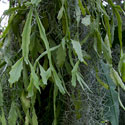 |
|
Vriesea
About 195 species closely related to
Tillandsia and Guzmania and native
to Mexico, Central America, South America and the West Indies. Twenty-two
species are cultivated in southern Africa. |
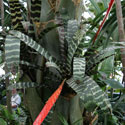 |
|
Werauhia ringens
[= Vriesea ringens]
Native from Costa Rica to Colombia. |
|
|
Wittrockia superba
Native
to Brazil. |
|
